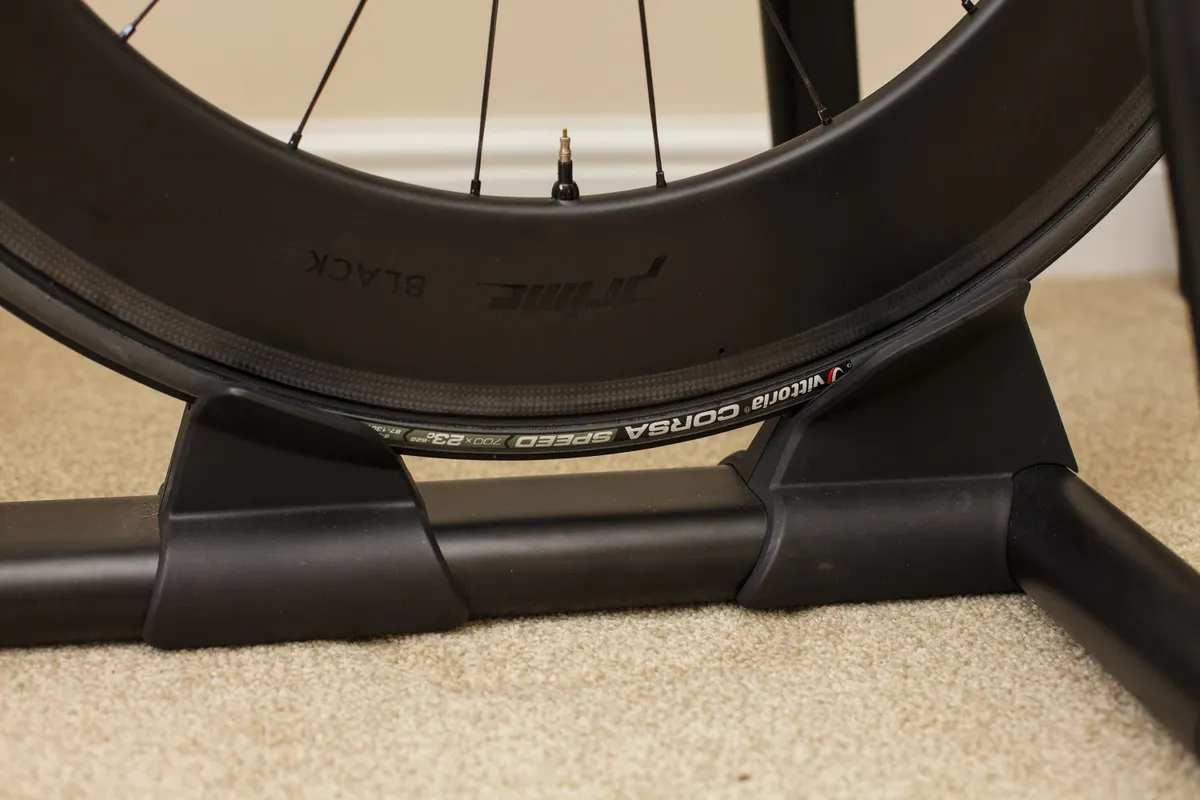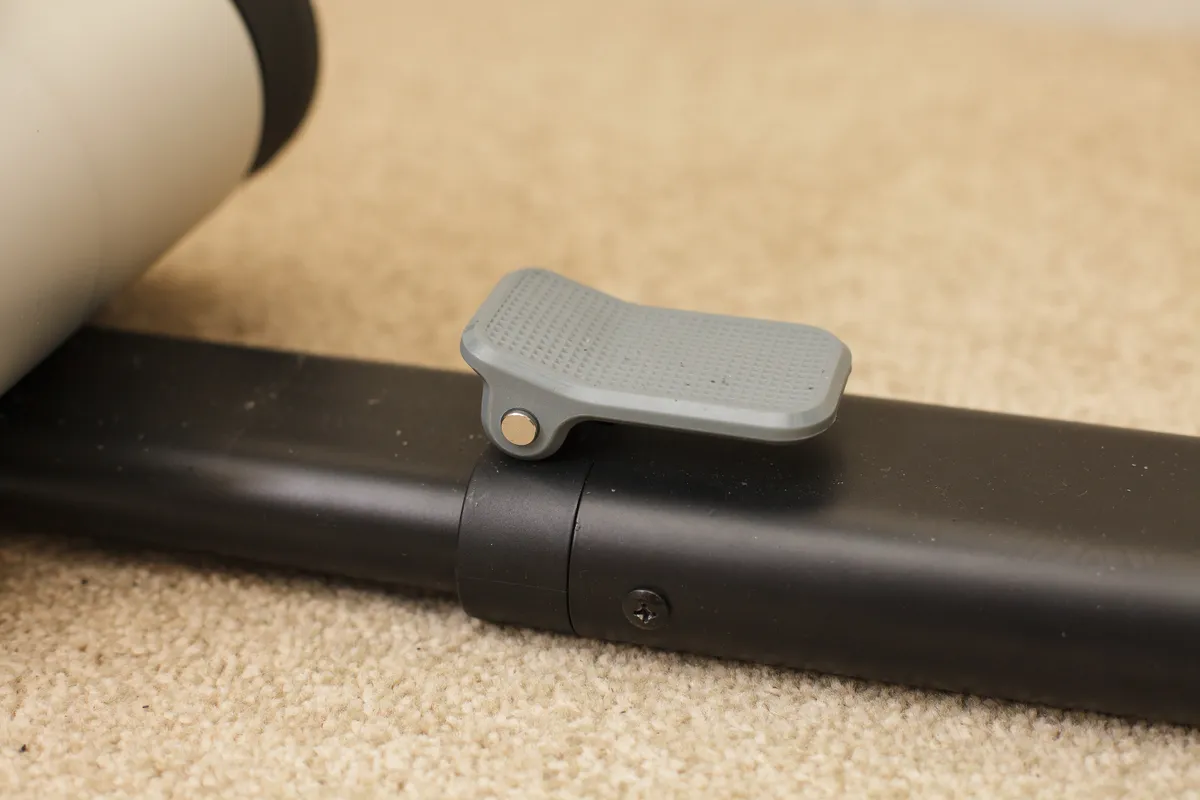The Kickr Rollr is Wahoo’s attempt to bring rollers into the modern era.
It's designed to combine the convenience and natural ride feel of rollers with features from the best smart trainers, which make indoor cycling so much more engaging.
The Kickr Rollr is easy and convenient to use, and offers a distinct indoor-cycling experience. However, its substantial size and weight, modest specification for the price and the lack of a built-in power meter, make the Kickr Rollr difficult to recommend except to those who value convenience above all else.
Wahoo Kickr Rollr setup
The Kickr Rollr arrives almost fully assembled, in a very large box. Provided you have enough room to manoeuvre, getting it set up is easy.
The roller section (the bit where the rear wheel sits) is fully assembled out of the box, and simply attaches to the A-frame front wheel mount via an adjustable connective metal bar.
To set the right length for your bike, you put it on the Kickr Rollr and adjust the length of the bar until the bike sits snugly on both ends. The clamp on the bar can then be pushed down to lock it in place.
Once that’s done, it’s just a matter of connecting it to a mains power source and the assembly process is finished.
Your bike can then be added or removed as required. To secure a bike in place for riding, the large rotary dial on the top of the A-frame front-wheel mount adjusts a front-wheel clamp, which tightens down on either side of your front wheel to lock it in place.
The wheelbase and front-wheel clamp can both be adjusted to accommodate “the majority of road bikes and road bike tyres” with 700c wheels and tyres up to 2.1in / 53mm in width, and wheelbases of 950mm up to 1,100mm.
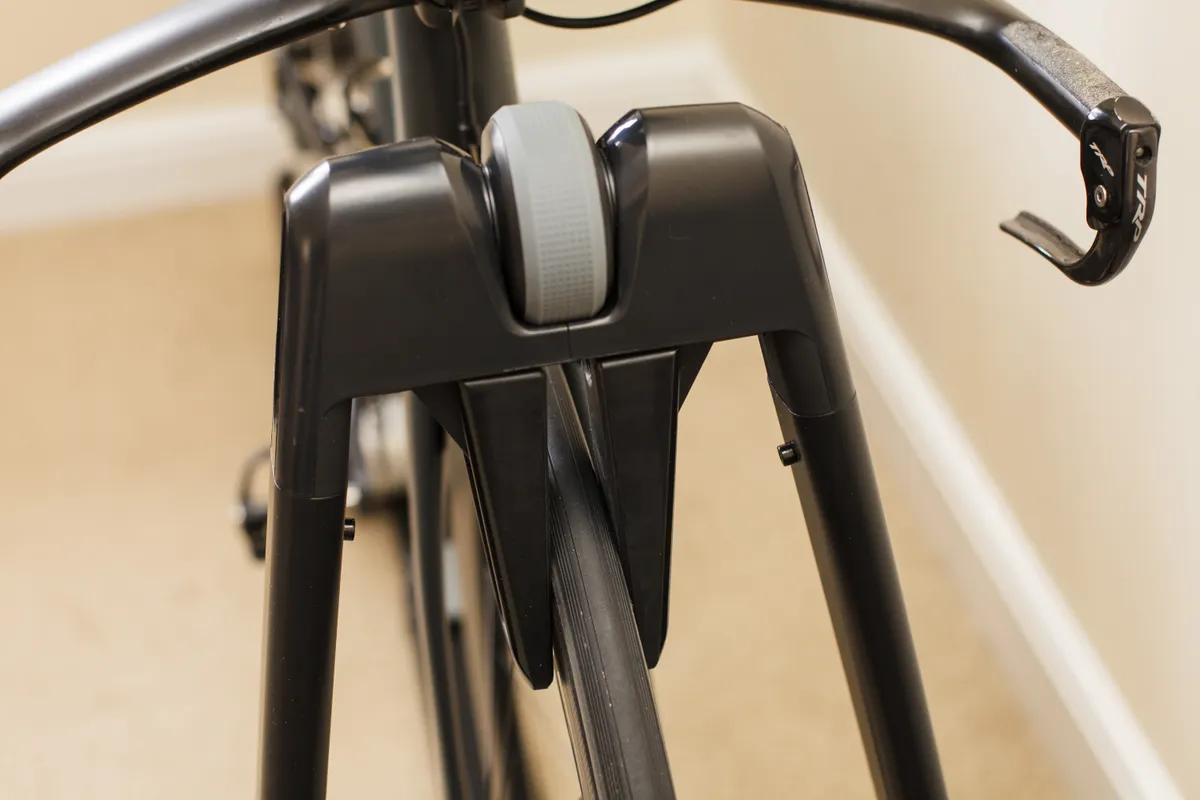
I tested the Kickr Rollr using a 2021 Giant TCR Advanced Pro 2 Disc and a Planet X Exocet II time trial bike, and both worked absolutely fine.
The ease and convenience of being able to pop a bike on and off in mere seconds is, without a doubt, the Kickr Rollr’s best feature.
It’s incredibly easy to do and you’ll never need to remove a rear wheel, fiddle with roller tension or swap a cassette, freehub or axle adaptor to fit a different bike on it.
Fully assembled, the Kickr Roll weighs 22.6kg. This bulk is put to good use in terms of build quality – the Kickr Rollr is built like a tank and feels as though it will last forever.
But, while the A-frame front-wheel mount does fold flat to make the Kickr Rollr easier to store, the large footprint and heavy weight mean it isn’t at all easy to get in and out of storage on a regular basis.

On a similar theme, Wahoo says the Kickr Rollr is “the ideal warm-up platform before events or big training sessions”, but, for the average amateur racer, I don’t see it as a good option for that purpose.
The main stumbling block to this is its sheer size and weight, which make it incredibly cumbersome to move around.
It also needs to be set up on flat ground, because there’s no height adjustability built into the feet.
Finally, you’d need mains power to access any of the smart features, which is rarely available to amateurs.
It can be used as a non-smart roller without power (up to a maximum resistance of 400 watts). But then a smaller, lighter set of non-smart rollers, or a wheel-on trainer, are far more convenient options, all things considered.
Wahoo Kickr Rollr performance
Connectivity
Like most modern smart trainers, the Kickr Rollr can connect to bike computers and indoor cycling apps via ANT+ or Bluetooth.
Unlike most smart trainers, though, the Kickr Rollr doesn't have a built-in power meter (more on this later).
Instead, it’s designed to automatically search for and connect to a power meter on your bike (via ANT+) when connected to a mains power source. The power and cadence data from the on-bike power meter is then combined with the roller speed data and broadcast to other connected devices.
In my testing, the Kickr Rollr always located the on-bike power meter quickly (whether it was the Wahoo Powrlink Zero or Garmin Vector 3 power meter pedals, or a Stages Power LR Shimano Ultegra R8000 crankset), and I didn’t suffer any dropouts or disconnections.
Ride feel
While the Kickr Rollr is described as a set of smart rollers, the ride experience has more in common with portable roller-based trainers or wheel-on trainers, than true rollers.
Learning how to ride on rollers usually requires balance and a level of concentration that simply isn’t needed on the Kickr Rollr, because your front wheel is secured in place.
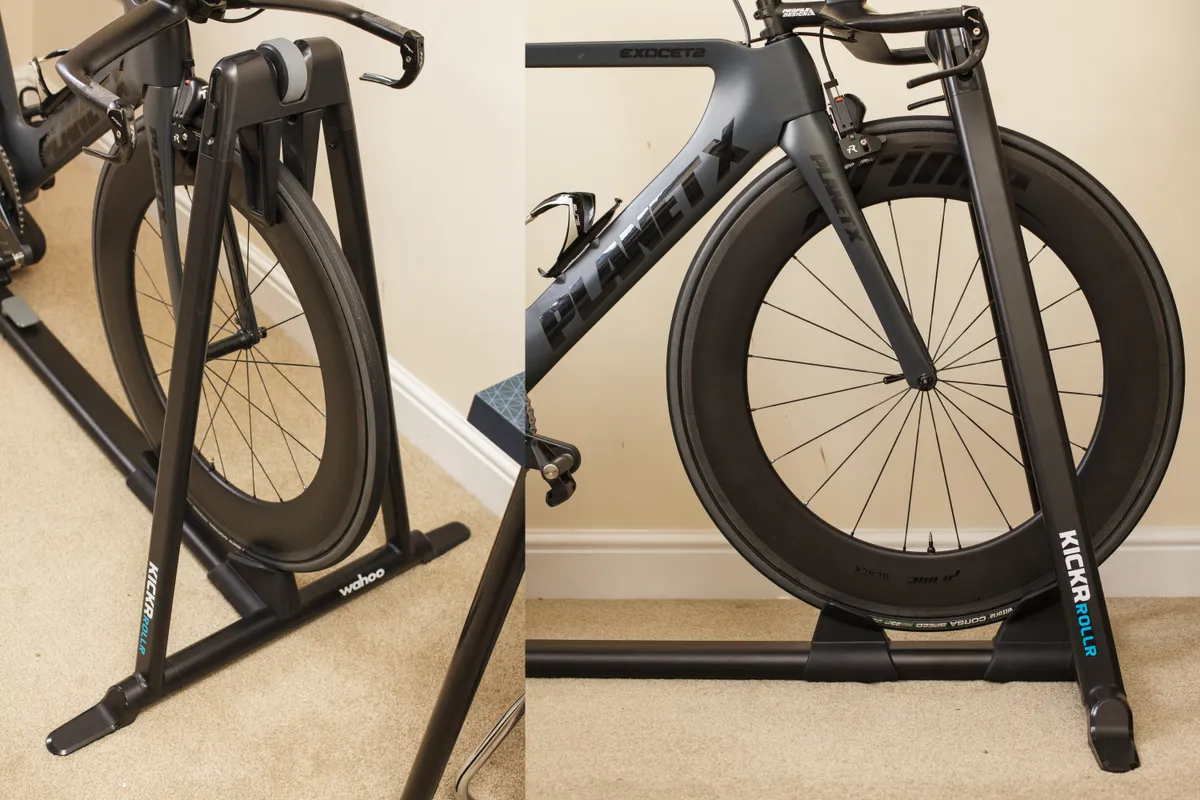
The advantage of this is that it removes any learning curve from the equation. Almost everyone will be able to use the Kickr Rollr straight away.
The same cannot be said for standard rollers, which have a steep learning curve even for experienced cyclists. However, the disadvantage is that the level of engagement standard rollers require is arguably what makes them more interesting to use than other types of indoor trainers.
Because of this, the experience of riding the Kickr Rollr feels more akin to that of a good wheel-on trainer, rather than rollers.
That your rear wheel is free to move around on the rear rollers does offer a different and more natural ride experience compared to having it locked in place, but it’s not a night and day difference.
The Kickr Rollr felt best during steady-state efforts on my time trial bike. The added movement at the rear of the bike meant I was able to sit in the aero bars for extended periods, with greater comfort than on a normal direct-drive smart trainer, and with the flywheel up to speed the pedalling inertia felt smooth and realistic.

Sprinting on the Kickr Rollr doesn’t present any issues. The front-wheel mount holds everything in place securely, so you can really give it everything you’ve got without worrying about falling off or tipping over.
When connected up to an indoor cycling app such as Zwift, the simulation of virtual courses and gradients is good but not spectacular at this price point.
This is likely due to the size and weight of the flywheel (4.7kg), which is identical to that of the cheaper Wahoo Kickr Snap (£429.99).
Similarly priced direct-drive trainers, such as the Wahoo Kickr Core (£699.99, 5.4kg flywheel), Tacx Flux S (£549.99, 7kg flywheel) and Saris H3 (£749.99, 9kg flywheel), offer a superior ride feel with greater levels of inertia, especially at lower speeds on steep virtual gradients.
Most can also simulate steeper gradients and offer a higher maximum power ceiling, which may be important for more powerful riders.

Noise
As with wheel-on trainers, the sound of the roller interacting with your tyres means the Kickr Rollr generates a bit more noise than the best direct-drive trainers.
When riding at around 30kph, the Kickr Rollr averages around 63 to 65 decibels, which is slightly louder than a typical direct-drive trainer, though not by much.
Once you kick things into gear, however, it gets much louder. When sprinting and getting up to speeds of over 45kph, the Wahoo Kickr Rollr produced just under 75 decibels.
This was measured on an iPhone placed one metre away from the trainer, parallel to the drivetrain side of my bike.
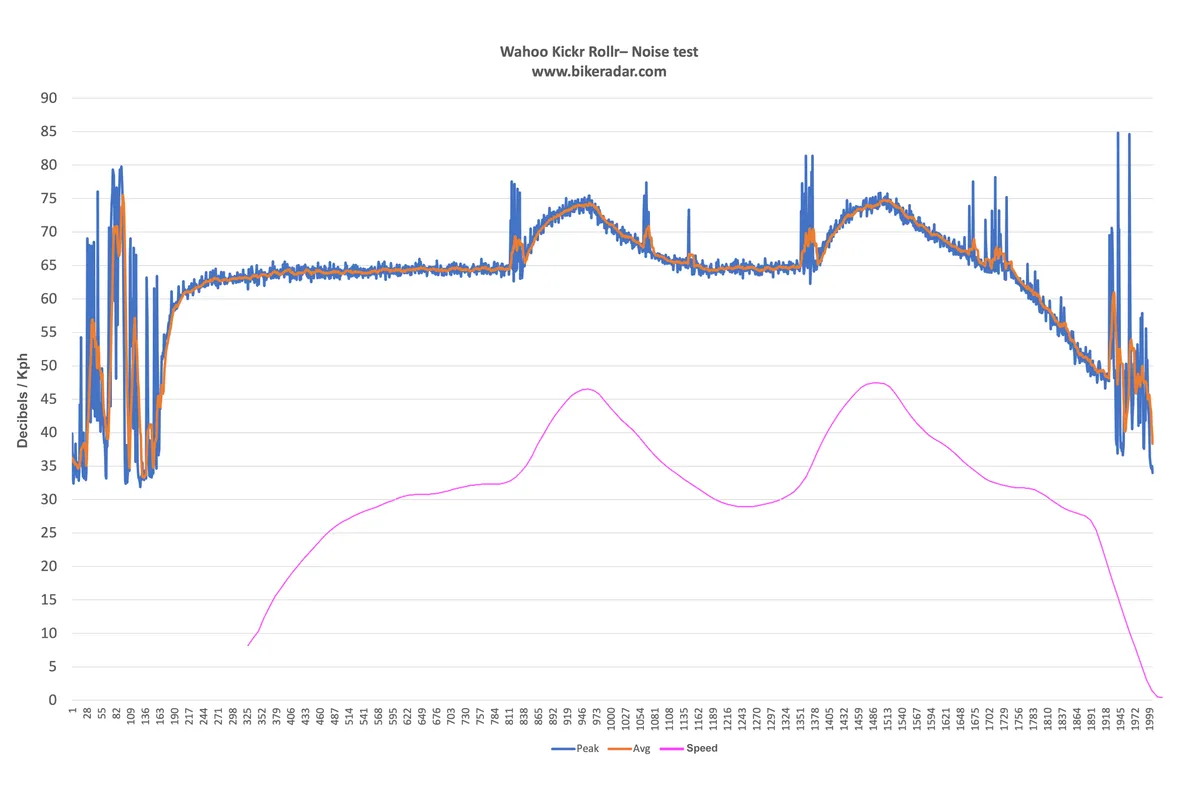
That’s significantly louder than the Pinnacle HC Turbo Home (a £499.99 direct-drive smart trainer), for example, which mostly stayed under 65 decibels even during sprints, in my testing.
My noise testing was performed using a Pirelli P Zero Race TLR tyre on my bike’s rear wheel, so your mileage may vary slightly depending on what tyres you’re using, but switching to wheels with Vittoria Corsa Speed TLR or Continental GP5000S TR tyres didn’t noticeably change the tone or volume of the noise.
Where’s the power meter?
As mentioned earlier, the Kickr Rollr doesn't have a built-in power meter. This sets it apart from practically every other smart trainer on the market today.
According to Wahoo, this is because building an accurate power meter into rollers is very difficult, due to there being too many variables. Our experience with other smart rollers, such as the Arion Digital Smart B+ rollers, confirms that assessment.
Wahoo, therefore, felt it would be better to just ditch the built-in power meter and allow the Kickr Rollr to use data from one on your bike instead.
It works well in practice, but it assumes you have access to a power meter.
If you don’t, you’ll need to find the money for one on top of the price of the Kickr Rollr in order to access its full feature set.
Without a power meter, the Kickr Rollr will only transmit speed and distance data, and you can’t use it to simulate virtual courses or follow ERG mode workouts.

Wahoo does sell the Kickr Rollr bundled with a single-sided set of its Powrlink Zero power meter pedals, but, at £1,199.99 / €1,399.99 / $1,399.99, this is one of the most expensive indoor-cycling setups available (excluding smart indoor bikes, which are even more expensive but obviously don’t require you to supply your own bike).
You’re also only saving £49.99 / €49.99 / $49.99 versus buying the two separately.
Of course, you can then use those Powrlink Zero pedals on your bike, outside, away from the Kickr Rollr.
But it’s hard to ignore the fact you can get a high-performing smart trainer with a built-in power meter (such as the Pinnacle HC Turbo, Elite Zumo, Saris M2 or Wahoo Kickr Snap) for less than £500.
And if you purchased one of those trainers with the same budget as the Kickr Rollr/Powrlink Zero bundle, you’d then have at least £700 to spend on a power meter, if you still wanted one for your bike. There are fantastic dual-sided power meter options available for that kind of money.
The warranty issue
Since the Kickr Rollr was released, concerns have been raised about the potential of the A-frame front mount to damage the wheel, through the repeated stress caused by the possible twisting and bending of the front wheel when secured in place.
Notably, Zipp has stated that it will not provide warranty support for damage that occurs through use of this kind, because it is beyond the scope of what Zipp considers to be normal use.
In a statement provided to BikeRadar, Wahoo says it “has tested and analysed several wheels and found that the stresses imposed by the Rollr trainer are all within acceptable levels, or lower than stresses observed during outdoor riding.
“We are confident that the Rollr will not damage wheels. We are also working with additional wheel manufacturers to certify their wheels with the Rollr since Zipp has taken this position and we plan to share our research with them.”
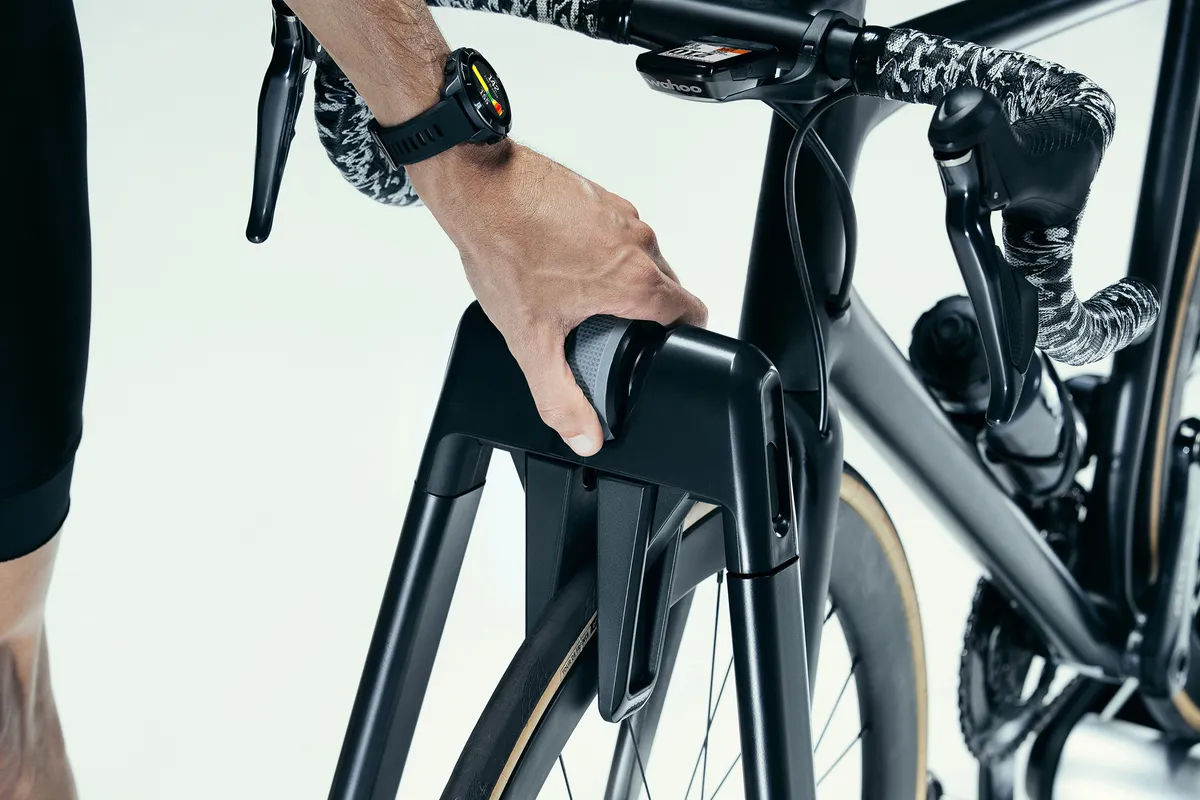
In my experience testing the Kickr Rollr, I didn’t see any damage to the various front wheels I used during testing, though my time has been confined to the test period, as opposed to long-term use.
I am a lightweight rider with a relatively low power output, but heavier, more powerful riders would expect to see greater forces at the front wheel. At the same time, the Kickr Rollr’s maximum resistance is capped at 1,500 watts.
If you’re concerned about using the Kickr Rollr with your bike or front wheel, double-check your warranty and exercise caution when riding indoors. It’s also worth pointing out that the same could be said of almost any indoor trainer, given that it will clamp your bike into a fixed position regardless of whether it’s at the front wheel or rear dropouts.
Wahoo Kickr Rollr bottom line
Though it’s nominally a set of smart rollers, the riding experience of the Kickr Rollr is more akin to that of a good wheel-on smart trainer.
That’s not a bad thing per se, but when there are cheaper, quieter smart trainers with similar or better specs, all with built-in power meters, it’s hard to recommend the Kickr Rollr unless you value the convenience factor above everything else.
It does offer something slightly different to the majority of indoor trainers, but it also comes with a number of resulting compromises and, ultimately, doesn’t do enough to justify its relatively high price.
Product
| Brand | Wahoo |
| Price | €799.99, £699.99, $799.99 |
| Weight | 22.60kg |
Features
| Mount | wheel_on |
| Folding legs | yes |
| Trainer type | smart_trainer |
| Resistance type | electromagnetic |
| Wheel size | 29in_700c |
| Connectivity | antPlus |
| Connectivity | bluetooth |
| Device compatibility | android |
| Device compatibility | ios |
| Device compatibility | mac |
| Device compatibility | windows |
| Noise | 75.0000 |
| Noise | DECIBEL |
| Max power | 1.5000 |
| Max power | WATT |
| Flywheel weight | 4.7000 |
| Flywheel weight | KILOGRAM |
| Max grade (degrees) | 10.0000 |

